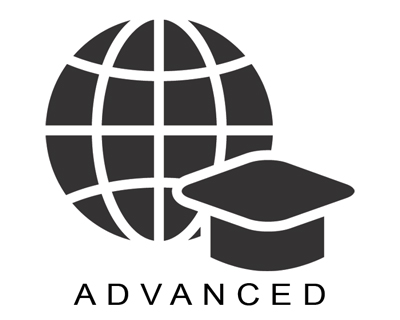Mulching is a well-established practice that conserves moisture, reduces soil erosion, suppresses weeds, and regulates soil temperature. Carbon-based mulches, such as compost-derived mulches, offer additional benefits by enriching soil with organic matter and supporting microbial life. With climate change intensifying droughts and heavy rainfall, mulching will become even more essential in soil and plant management.… Continue reading USE.238-The Uniqueness of and Markets for Composted Mulches-AC25.USCC
Author: Alec Resha
USE.324-Compost Inclusion Effect on Soil PH Over Time-AC25.USCC
Naturcycle, a leading compost marketing and engineered soils firm in the northeastern U.S., is conducting research on compost pH and soil interactions. While compost typically has a neutral to slightly alkaline pH (7.0–8.5), its long-term effects on soil pH can vary due to biological activity and nutrient additions. The study, conducted in partnership with Penn… Continue reading USE.324-Compost Inclusion Effect on Soil PH Over Time-AC25.USCC
FAC.230-Moving Renaming Permitting the Shakopee Mdewakanton Siou…-AC25.USCC
The Shakopee Mdewakanton Sioux Community (SMSC) has operated a turned windrow composting facility in Shakopee, Minnesota, since 2011, quickly reaching its 70,000 tpy capacity due to increasing food waste diversion mandates. To meet growing demand, SMSC invested in relocating and expanding the operation. This presentation will detail the challenges faced in site selection, permitting, regulatory… Continue reading FAC.230-Moving Renaming Permitting the Shakopee Mdewakanton Siou…-AC25.USCC
VIS.225-Everything You Want to Know About Every Step of a Successf…-AC25.USCC
Compo-Haut-Richelieu Inc. (CHR), a public-private partnership in Québec, has successfully built and commissioned the province’s first fully enclosed compost facility. This project navigated regulatory, financial, and operational challenges to create a state-of-the-art 50,000-metric-ton-per-year facility. The presentation will cover planning and orientation, including CHR’s strategic PPP structure and collection programs, as well as the design and… Continue reading VIS.225-Everything You Want to Know About Every Step of a Successf…-AC25.USCC
USE.323-Soil Water Repellency in Compost Based Substrates-AC25.CREF
With global growing media demand expected to rise 400% by 2050, Florida’s $2.3 billion horticulture industry is exploring alternatives to peat and coir. Locally sourced compost could be a viable substitute, but its soil water repellency (SWR) must be assessed to ensure consistent performance. Greenhouse trials examined SWR in compost-based media and tested surfactant applications… Continue reading USE.323-Soil Water Repellency in Compost Based Substrates-AC25.CREF
SCI.310-Assessing Household Food Waste Generation in the San Joaqu…-AC25.CREF
This study explores decentralized composting in California’s San Joaquin Valley to support SB 1383’s goal of diverting 75% of organic waste from landfills. Researchers surveyed 400 households, finding that each produces an average of 530 pounds of food waste annually. While 79% are willing to compost at home and 74% support curbside collection, only 26%… Continue reading SCI.310-Assessing Household Food Waste Generation in the San Joaqu…-AC25.CREF
USE.322-Sustainability Assessment of Urban Agriculture and Compost…-AC25.CREF
This study assessed the environmental and economic benefits of urban microfarms (MF) in Mansfield, Ohio, compared to conventional California spinach and lettuce production. Using local compost and rainwater, MFs significantly reduced greenhouse gas emissions (GHGe) by 56-74% while boosting local income and community engagement. Compost-based fertility had higher emissions than chemical fertilizers but was offset… Continue reading USE.322-Sustainability Assessment of Urban Agriculture and Compost…-AC25.CREF
SCI.212-Comparative Analysis of Mesh Bag Field Testing Method-AC25.USCC
This session will examine the widely used mesh-bag method for field testing compostability, addressing concerns about its accuracy compared to real-world composting conditions. Multi-year data on moisture, temperature, and microbial communities inside and outside mesh bags, evaluating statistical significance and reproducibility are presented. The discussion will also compare mesh-bag and bagless methods, highlighting their challenges… Continue reading SCI.212-Comparative Analysis of Mesh Bag Field Testing Method-AC25.USCC
POL.130-How Compostables Have Become a Four-letter Word-AC25.USCC
This session will explore the complexities of foodware bans and ordinances across the U.S., highlighting inconsistencies in definitions, compliance requirements, and unintended consequences like compost contamination. Experts will provide an overview of legislation, discuss challenges faced by composters and businesses, and examine the impact of local policies that often misalign with composting facility capabilities. The… Continue reading POL.130-How Compostables Have Become a Four-letter Word-AC25.USCC
VIS.224-Whole System Strategic Planning – Finding Cross-Sector Com…-AC25.USCC
This presentation discusses the Improving the Circularity of Compostables and Compost initiative, a nationwide strategic effort to optimize the U.S. composting system. Representatives from key stakeholder groups will share insights from a 3-day Future Search event, where a common agenda and action plan were developed. Participants will explore ways to align with industry workstreams and… Continue reading VIS.224-Whole System Strategic Planning – Finding Cross-Sector Com…-AC25.USCC


